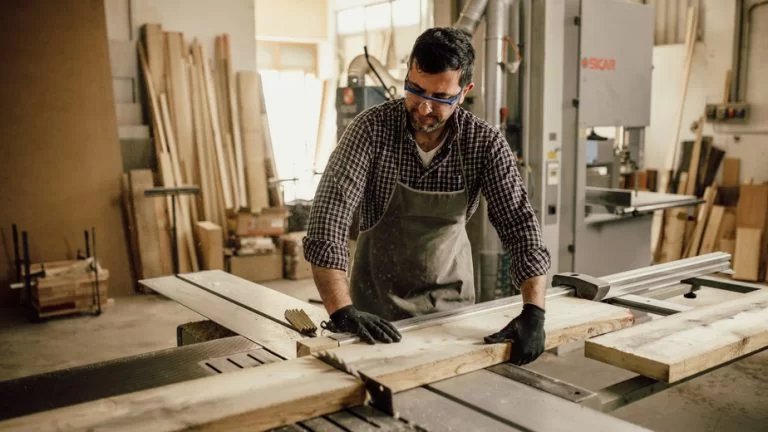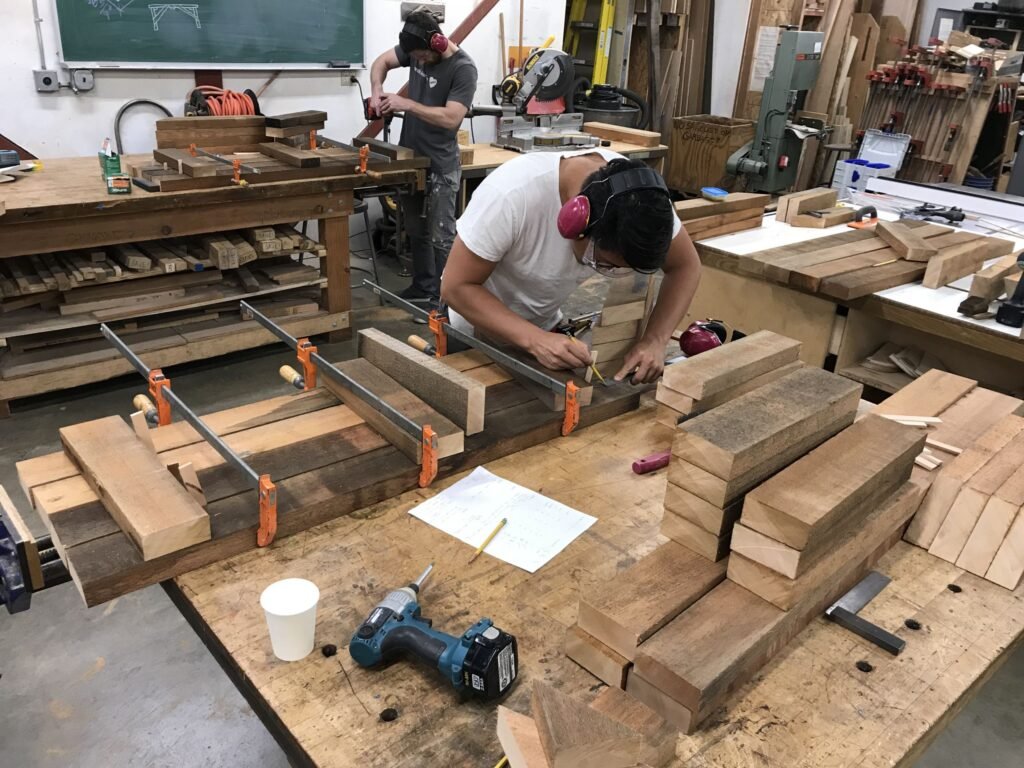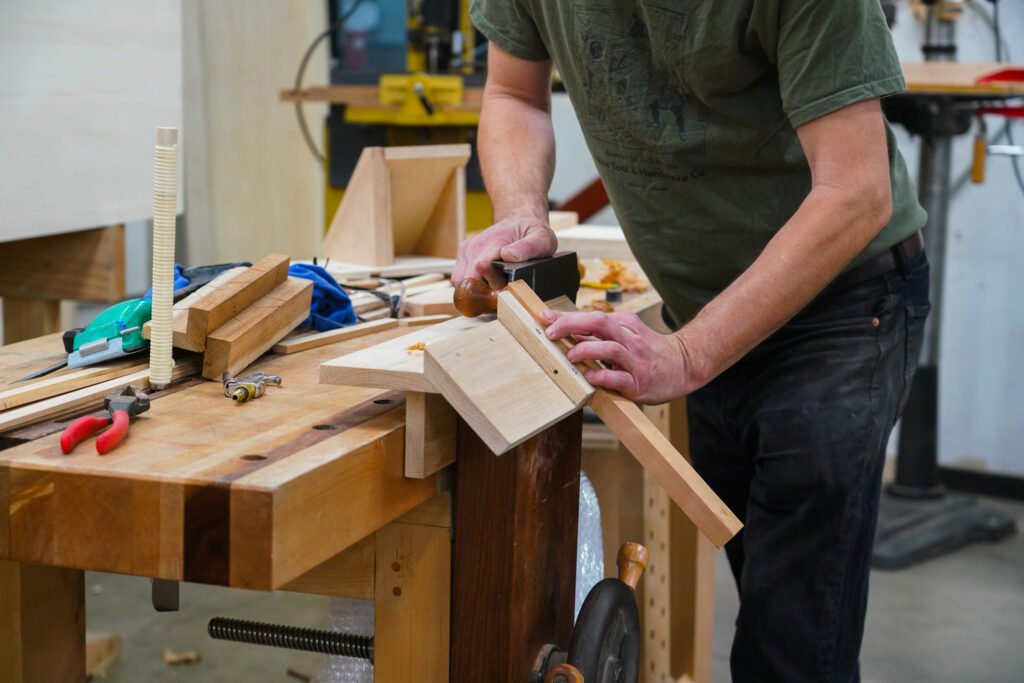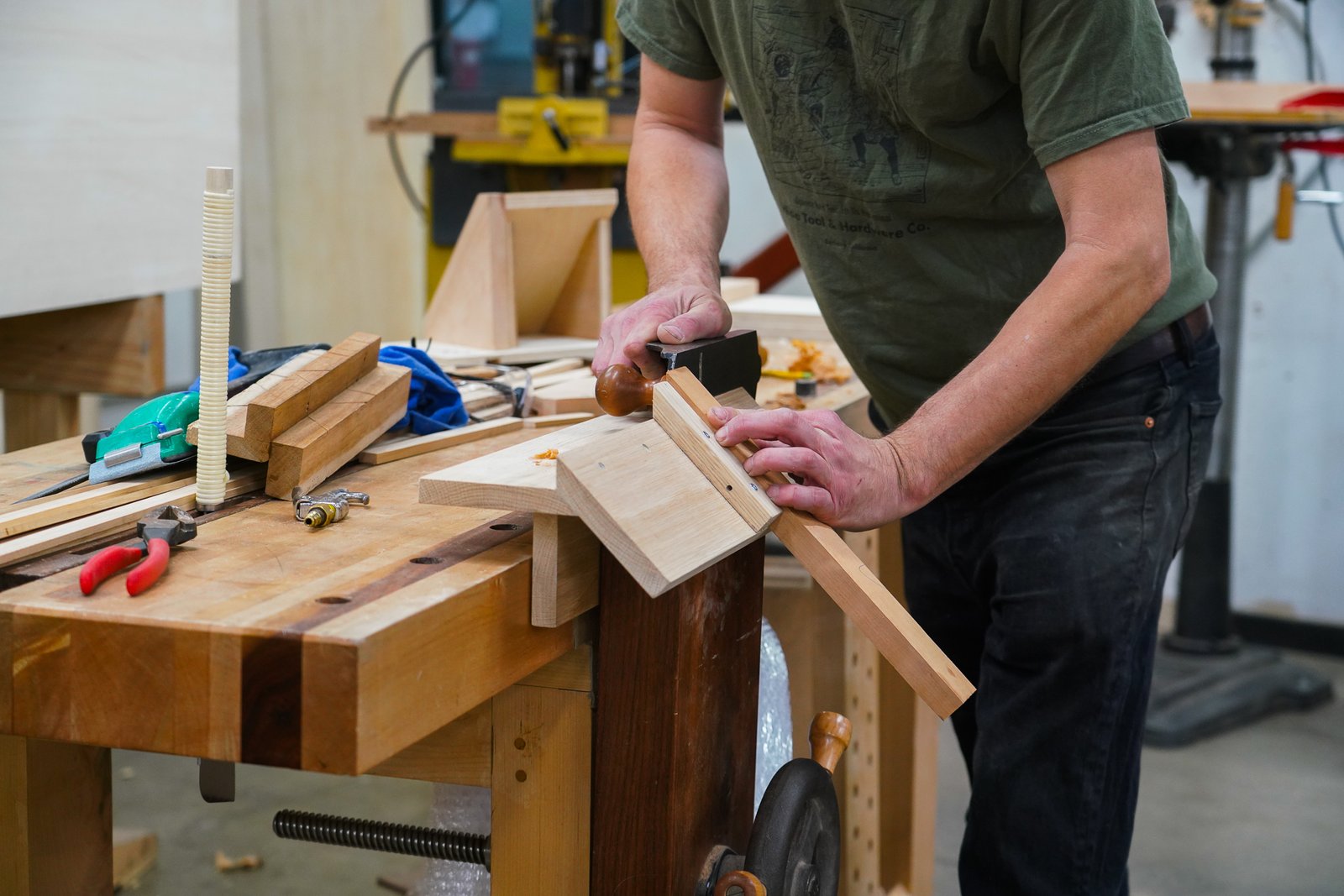The Artistry of Crafting with Wood
A masterful woodworker possesses a unique blend of technical prowess and artistic finesse. These artists of the workshop possess the remarkable skill to transform a simple piece of wood into a work of art. Their hands dance across the grain, caressing it with precision and care. With each stroke of the chisel and each pass of the plane, they shape the wood, coaxing out its natural beauty. This artistry goes far beyond mere utilitarian function; it is a testament to the creativity and craftsmanship that lies within woodworkers.

In the hands of a skilled woodworker, even the humblest piece of timber has the potential to become a masterpiece. These artisans can navigate the nuances of different wood types, understanding how each one behaves and manipulating its characteristics to suit their vision. From the sturdy durability of oak to the elegant grain patterns of walnut, they know just how to harness the unique qualities of each wood to create something truly extraordinary. It is through their skilled hands and keen eye for detail that the innate beauty of wood is brought to life, capturing the essence of nature itself. And so, the artistry of crafting with wood continues to captivate and inspire, fueling the passion of woodworkers in their pursuit of excellence.
Related:-Woodworking Jobs Near Me: Building a Career with Passion
The Essential Tools Every Woodworker Needs
The art of woodworking requires a set of essential tools that every woodworker should have in their arsenal. These tools not only make the process smoother and more efficient, but they also ensure that the final results are of the highest quality. One of the most fundamental tools a woodworker needs is a reliable set of chisels. These versatile tools allow for precise shaping and carving, turning a plain block of wood into a work of art. They come in various sizes and shapes, each suited for different tasks such as creating intricate details or removing excess material. Additionally, a good set of chisels should be sharp and properly maintained to achieve clean and accurate cuts.
A sturdy workbench is another essential tool that every woodworker needs. This sturdy surface provides a stable and secure area for working on projects. It should have enough space to accommodate both the woodworker and the materials being used. A workbench should also have a vise attached to hold the wood securely in place, allowing for steady and controlled work. Furthermore, a workbench can have additional features such as built-in storage to keep tools and supplies organized, ensuring easy access and efficiency during the woodworking process. Overall, a well-equipped workbench is a foundational tool that sets the stage for successful woodworking projects.
Techniques for Achieving Smooth and Flawless Finishes
Achieving a smooth and flawless finish on wood projects can be a challenging but rewarding endeavor. The secret lies in mastering a combination of techniques and using the right tools for the job. One essential technique is sanding, which helps to remove any imperfections and smooth out the surface of the wood. Starting with a coarse grit sandpaper and gradually working your way up to finer grits will ensure a smooth and even finish. Additionally, using sanding blocks or power sanders can help to maintain a consistent pressure and minimize the risk of creating uneven surfaces.

Another important technique for achieving a flawless finish is applying a suitable wood finish or sealer. This helps to protect the wood from moisture, UV damage, and wear and tear, while also enhancing its natural beauty. Before applying the finish, it is crucial to properly prepare the wood by sanding it to remove any existing coatings or imperfections. Applying a coat of wood conditioner prior to staining can also help to achieve an even and consistent color. When it comes to choosing the right finish, there are numerous options available such as varnish, lacquer, shellac, or polyurethane. Each finish has its own unique characteristics and application methods, so it’s important to consider the specific needs of your project.
Exploring Different Types of Wood and Their Uses
Wood is a versatile and widely used material for crafting and construction. There are several different types of wood, each with its own unique characteristics and uses. One common type of wood is oak, known for its durability and strength. Oak is often used in furniture making, as well as for cabinetry and flooring. It has a beautiful grain pattern that adds a touch of elegance to any project. Another popular type of wood is pine, which is known for its affordability and versatility. Pine is commonly used for construction purposes, such as framing and decking. It is also a popular choice for making furniture and decorative items due to its light color and smooth texture. Whether you’re crafting a piece of furniture or working on a construction project, understanding the different types of wood and their uses is essential for achieving the desired results.
Tips for Accurate Measurements and Precise Cuts
Accurate measurements and precise cuts are crucial for any successful woodworking project. One key tip is to always use a reliable measuring tool, such as a tape measure or a combination square, to ensure accurate measurements. Additionally, it’s important to take your time and double-check your measurements before making any cuts. Rushing through this step can lead to costly mistakes and wasted materials. Remember, it’s better to measure twice and cut once.
When it comes to making precise cuts, having a sharp blade is essential. Dull blades not only make it difficult to create clean cuts but can also increase the risk of accidents. Therefore, it’s essential to maintain your tools properly and regularly sharpen your blades. Additionally, using a guide or fence can help ensure straight and accurate cuts. By securely clamping a straight piece of wood or using a saw fence, you can create a guide for your saw or router, resulting in more precise and consistent cuts.
Understanding Joinery: Strengthening Wood Connections
When it comes to woodworking, understanding joinery is essential for creating durable and strong wood connections. Joinery refers to the various techniques and methods used to connect two or more pieces of wood together. It not only provides structural support but also adds aesthetic value to the finished piece. There are numerous types of joinery that woodworkers use, each with its own unique characteristics and strengths. Some popular types include butt joints, dado joints, dovetail joints, and mortise and tenon joints. These techniques require careful planning, precise measurements, and skilled execution to achieve seamless and long-lasting connections. By mastering the art of joinery, woodworkers have the power to elevate their craftsmanship and create stunning and enduring wooden pieces.
One of the key factors in successful joinery is selecting the right type of joint for the intended purpose. The choice of joint can vary depending on several factors such as the type of wood being used, the stress the joint will endure, and the desired appearance of the finished product. For example, a dovetail joint is known for its superior strength and resistance to pulling forces, making it ideal for constructing drawers or boxes. On the other hand, a simple butt joint, where one piece of wood is butted against another, is quick and easy to make but may not provide the same level of strength as other types of joints. By understanding the characteristics of each joint and considering the specific requirements of the project at hand, woodworkers can ensure that their chosen joints will provide the necessary strength and stability for the end result.
What is joinery in woodworking?
Joinery in woodworking refers to the process of connecting two or more pieces of wood together to create a strong and durable structure. It involves various techniques and methods to ensure proper alignment and stability of the wood connections.
Why is joinery important in woodworking?
Joinery is crucial in woodworking as it determines the strength and overall quality of the finished piece. It helps to prevent the wood from coming apart, enhances the structural integrity, and ensures that the furniture or project lasts longer.
What are some common types of wood joinery?
Some common types of wood joinery include dovetail joints, mortise and tenon joints, butt joints, finger joints, and rabbet joints. Each type has its own unique characteristics and applications, depending on the project requirements.
How can I achieve strong wood connections through joinery?
To achieve strong wood connections through joinery, it is important to ensure precise and accurate cuts, use appropriate joinery techniques for the specific project, and select the right type of wood for the desired strength and durability.
What tools are commonly used for joinery in woodworking?
Common tools used for joinery in woodworking include chisels, mallets, hand saws, dovetail jigs, router bits, and various clamps. These tools help in creating precise cuts, shaping joints, and holding the wood pieces together during the assembly process.
Can joinery be used for both decorative and structural purposes?
Yes, joinery can be used for both decorative and structural purposes in woodworking. While some joinery techniques provide strong and sturdy connections for structural support, others are used to create decorative elements or add visual interest to the piece.
How can I improve my joinery skills?
Improving joinery skills requires practice, patience, and a willingness to learn. It is essential to study different joinery techniques, seek guidance from experienced woodworkers, and gradually work on increasingly complex projects to enhance your joinery skills.
Are there any tips for ensuring accurate measurements in joinery?
Yes, some tips for ensuring accurate measurements in joinery include using high-quality measuring tools, double-checking measurements before making cuts, marking the wood clearly, and taking into account the thickness of the saw blade or router bit when measuring.

Can different types of wood affect the strength of joinery?
Yes, different types of wood can affect the strength of joinery. Hardwoods such as oak or maple are generally stronger and more durable than softwoods like pine or cedar. Choosing the appropriate wood for the specific joinery application is vital to ensuring a strong connection.





